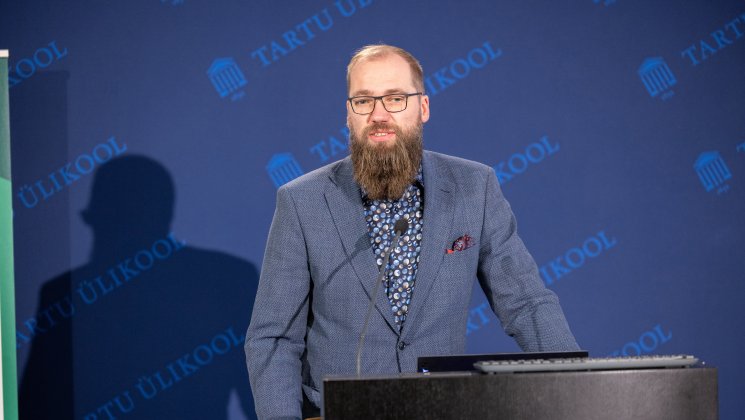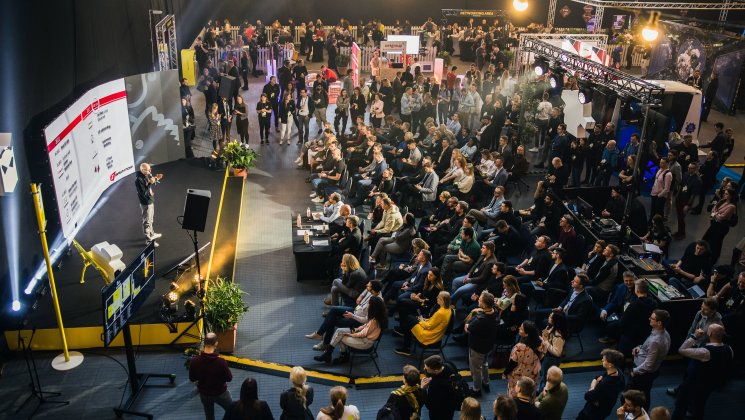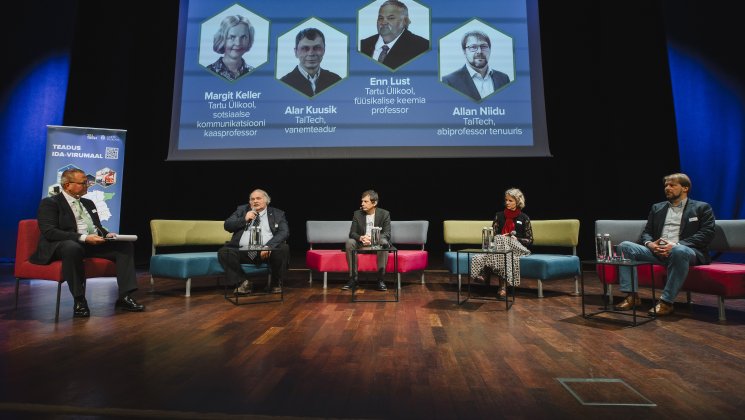University of Tartu supports nine new ideas with business potential
Last year, applications were submitted for obtaining the University of Tartu experimental development grant for 35 research projects, nine of which will receive funding in the total amount of 315,000 euros.
According to Vice Rector for Development Tõnu Esko, the experimental development grant helps to accelerate the implementation of research into society and the economy. "Estonia has set a goal for being the hub of 500 deep-tech companies by 2030. The mission of the University of Tartu is to help the country get closer to this goal, and this requires changing the thought pattern. If we think about previous years, we are already doing a lot differently, also with the experimental development grant,“ Esko said.
This year, more attention was paid to business potential, which was assessed on the basis of two parameters: whether the project would access the market within two years and whether it could become part of the UniTartu Ventures investment portfolio. A good example is the project by Arvi Jõers which received the grant in 2021 and grew into Gearbox Biosciences. By the end of 2023, the startup raised 500,000 euros, and is also part of the UniTartu Ventures portfolio.
In order to identify the business potential, the applications went through several rounds of assessment. Field experts assessed the scientific aspects of the projects, the background idea and the possibilities for development. Then, the experts at the UT Centre for Entrepreneurship and Innovation together with entrepreneurs in residence assessed the possibility of the development of the project leading to the establishment of a spin-off company or large-scale business cooperation.
As in previous years, the majority of the applications were submitted from the Faculty of Science and Technology. "Every faculty has ideas that can change the world. In cooperation with the deans of the faculties, we have the opportunity to detect them,“ Esko noted and specified that efforts will be made in 2024 towards increasing the number of applications also in the Faculty of Medicine, Faculty of Social Sciences and Faculty of Arts and Humanities.
For the development of one idea, an experimental development grant of up to 35,000 euros can be obtained from the university's development fund. Unlike in previous years, it is possible to apply for the grant several times now as well as in the future. This measure will support research projects at a very early stage when the investment risk for external investors is still too high. Since the establishment of the experimental development grant in 2019, the university has supported projects with a total of approximately 1.3 million euros.
The following projects will receive the experimental development grant.
Preliminary studies have revealed that patients with type 1 diabetes have very few antibodies to a single bacterial virus toxin. This suggests the possibility of this toxin being the originator of the disease. Studies into other antibodies against the antigens of this virus and similar viruses are underway in order to improve the biomarkers of type 1 diabetes, develop vaccine candidates, and better understand the causes of the development of autoimmune diseases.
Since the use of fluoro compounds in competitive sports has been completely banned, there has been a great need for novel and environmentally friendly ski lubricants. The project uses the knowledge gained during the synthesis of ionic fluids and the development of ionic polymers to develop next-generation ski lubricants. For this, the research team uses ingredients based on ionic liquids and natural and synthetic waxes.
The goal of the project is to complement the mRNA vaccine technology by adding an optimised self-replication function based on RNA replication of alphaviruses. The technology can be applied to the development of a new generation of gene vaccines, including pathogens and anti-cancer and other vaccines. The proposed approach will address the problems associated with current mRNA vaccines, such as the short duration of gene expression produced by mRNA and the need for chemical modification of mRNA and its use in large (side-effect producing) quantities.
The development of precision medicine requires high-throughput cost-effective methods to analyse disease-related changes in the body fluids and tissue samples of a healthy person and patient. The goal of the project is to develop a novel method for multi-analysis of protein kinases as biomarkers of diseases in a clinical laboratory.
The aim of the project is to create the first version of software that allows the seller and intermediary of voluntarily traded carbon credits to assess the impact of their credits on biodiversity and prove it to clients. The carbon market is overshadowed by the reputation of greenwashing, which is mostly due to the negative impact of low-quality credits on nature.
The aim of the project is to develop a low-cost, high-energy density, efficient and sustainable prototype of an aqueous-based Zinc ion hybrid supercapacitor (ZIHS). It combines the complementary advantages of Zinc ion batteries and supercapacitors: high energy and power density and cycle stability. ZIHS can be used in the future in wind power generation, uninterruptible power supply, voltage drop compensation, photovoltaic power generation and industrial machinery energy recovery systems, electric and hybrid vehicles, transportation and military industries. Due to the safety and good biocompatibility of ZIHS, it can be applied in portable electronics, such as e-skin, health monitoring devices, etc.
Photocatalysis-based hydrogen production technology requires an efficient, stable and durable catalyst that can be produced affordably and in large quantities. Its development has been a serious challenge for materials scientists around the world for over 50 years, but currently there is no photocatalytic hydrogen generator in commercial use yet. A research group of materials scientists from the UT Institute of Physics and Institute of Chemistry and the PARROT French-Estonian science and technology cooperation programme, which has already commenced, will test its methodology during the project in order to increase the efficiency and stability of the photocatalyst. As a follow-up project, a prototype photocatalytic hydrogen generator will be completed.
The goal of the project is to develop a prototype air quality sensor by applying the original measurement method recently developed in the Laboratory of Sensor Technologies of the UT Institute of Physics. The method can potentially be used in a variety of small semiconductor gas sensors to make them considerably faster and more stable. Such low-power sensors can be used, for example, in personal smart devices and IoTs to target measures to reduce air pollution and its consequences, as well as to detect emergency situations requiring rapid response (e.g. poisoning, fire or explosion).
The project integrates existing methods of analysis of textual data and presentation of its results. With its support, a tool will be developed that will allow a user who has no previous knowledge of statistics or programming to get an initial overview of the content of textual data.



